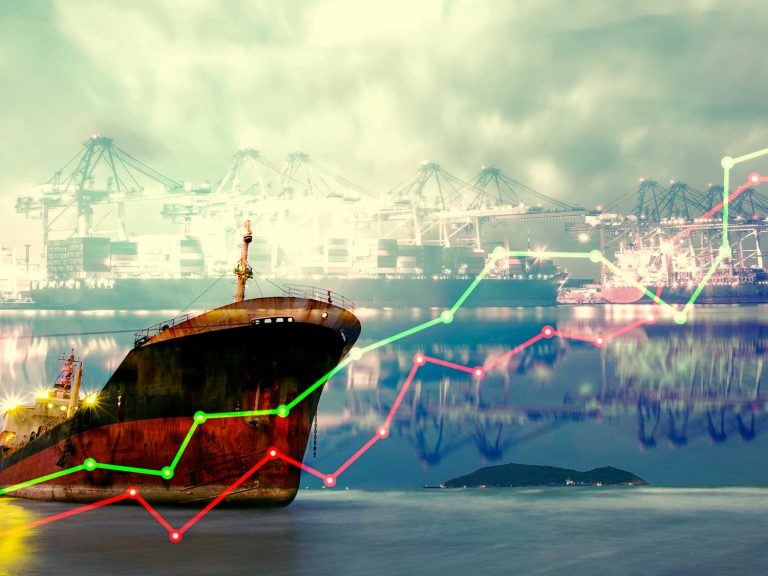
Date:
Shipping lines get creative with charges
With sea freight rates so low, below cost on many important trade lanes the container shipping lines are looking to surcharges and all manner of ancillary charges to boost their cash flows.
Macro-economics continue to work against the shipping lines, with global demand suppressed and costs rising leaving them struggling to impose general rate increases, with a long-term surplus of shipping capacity adding to their problems.
The deterioration of their operating results is encouraging carriers to introduce temporary surcharges as a mean of compensating, at least partially, for current low freight rates.
Shipping lines have long been accused of using surcharges to pass additional costs and restore their profit margins and while some surcharges were expected, like the EU-ETS emissions surcharge, which is due to come into operation on the 1st January, other surcharges, like those for war risks, have turned out to be much heavier than expected.
There is a strong likelihood that we will see surcharges become a much larger component in the costing of sea freight services in 2024, with combined surcharges accounting for 20% of the overall freight rate.
On the spot market, in particular, surcharges are added to the basic freight rate and the lines will do all they can to ensure that these surcharges are applied
War Risk
Surcharges for war risks are applied when cargo transits close to conflict zones and are usually justified by the fact that the insurers themselves apply surcharges to the shipping companies.
This is not always the case and there is potentially an opportunity for the shipping lines to make some additional profit.
However, today, there is no shortage of geopolitical hotspots. The war between Russia and Ukraine has made the Black Sea a particularly exposed area, with a Turkish ship colliding with a mine and Russia opening fire on commercial vessels.
The conflict in Israel raises the risk of regional contagion and a direct threat to one of the world’s key sea freight routes, with the Gulf of Aden and Suez Canal exposed.
Already we have seen an NYK car carrier hijacked, a CMA CGM container ship seemingly attacked by a small drone in the Indian Ocean and Maersk replacing two vessels in the region, presumably due to ownership concerns.
Zim is re-routing some vessels resulting in longer transit times, due to security concerns and has applied a war risk surcharge.
Fuel
There is currently a high risk of speculation on refined product prices and if there is a major escalation of the Israeli-Palestinian conflict, they are likely to become even higher.
This means that there is a risk that a general Emergency BAF surcharge could be introduced to take account of these potential cost increases.
Aden
With the USA seeking a coalition to protect shipping, this surcharge could be extended to cover the extra cost of securing merchant shipping convoys crossing the Gulf of Aden.
The increased risk involved in transiting the gulf could result in a significant increase in this surcharge, which was originally created to cover the cost of anti-piracy measures.
Suez Canal
The Suez Canal is increasing fees by 15% for Asia-Europe traffic from the 15th January 2024.
Again, if the Israeli-Palestinian conflict escalates, the carriers could be asked to contribute to the cost of securing the Suez Canal militarily, which would be in addition to war risk surcharges.
Panama
Transit and draught restrictions were imposed by the Panama Canal Authority (ACP) in response to persistent low water levels from the drought that has hampered operations since May.
Container shipping lines have reacted to the restrictions by adding canal transit surcharges ranging from $300 per teu to $500 and restrictions may stay in place for years.
Container shifting
Maersk has said that from the 1st January it will introduce a varying ‘container shifting’ charge at various ports in North Europe and the Mediterranean to cover re-stows on its ships.
Maersk explained: “This charge is for additional operational expenses due to extra container moves for reasons like re-stacking because of a change of destination or vessel, or moving of the container from load stack to gate.”
It said it did not cover extra moves related to customs inspections, or to facilitate the stuffing or stripping of the container, as these services were already covered by separate charges.
Surcharges like BAF and CAF have become a standard feature of freight rate calculations and the same often goes for the ISPS (shipping and port security) and MARPOL (ship pollution) surcharges.
While many of these new surcharges are justified we will, as always, pressure our carrier partners to fully justify the imposition or increase of charges.
EMAIL Andrew Smith, Chief Commercial Officer, if you would like to learn more, or have concerns about any of the issues raised here.
